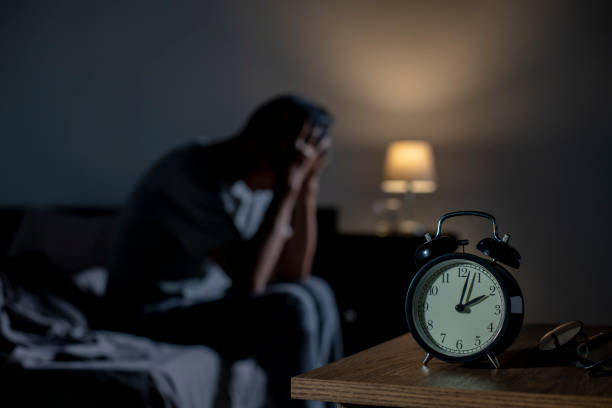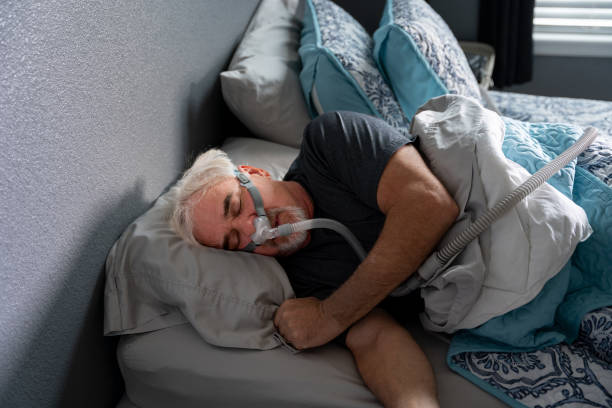How to Managing Common Sleep ProblemsWhy Sexual Health is Important 2024

Sleep is an essential component of our health. It plays a vital role in physical health, function, and emotional stability. But many people struggle with sleep disorders that can impact the quality of life. In this comprehensive guide, we will explore some of the most common sleep disorders, including sleep apnea, restless leg syndrome (RLS), and narcolepsy. We will discuss their symptoms, causes, and available treatment options to help you understand and manage these conditions effectively.
1. Sleep Apnea

What is Sleep Apnea?
Sleep apnea is a serious sleep issue in which breathing is interrupted during sleep. These interruptions, known as apneas, can last from a few seconds to minutes and may occur multiple times per night. There are types of sleep apnea: obstructive sleep apnea and central sleep apnea.
- Obstructive sleep apnea (OSA): This is the most common type and occurs when the muscles at the back of the throat become excessively relaxed, causing a blockage in the upper airway. This blockage prevents air from reaching the lungs, causing sleep disruption and low oxygen levels in the blood.
- Central sleep apnea: This type is less common and occurs when the brain fails to send the right signals to the muscles responsible for breathing. Unlike OSA, there is no physical blockage in the airway; instead, the problem lies in the brain’s control of breathing.
Symptoms of sleep apnea:
- Loud snoring
- Gapping or choking during sleep
- Excessive daytime sleepiness
- Morning headaches
- Difficulty concentrating
- Irritability and mood swings
- Dry mouth or sore throat upon waking
Causes and risk factors:
Several factors may contribute to the development of sleep apnea, including:
- Obesity: Excess weight, especially around the neck, can increase the likelihood of airway obstruction.
- Age: The risk of sleep apnea increases with age.
- Genetics: A family history of sleep apnea may increase susceptibility.
- Physiological factors: Certain anatomical features, such as narrow airways or enlarged tonsils, may contribute to sleep apnea.
- Lifestyle factors: Smoking and excessive alcohol consumption may worsen the condition.
Treatment options:
- Lifestyle changes: Losing weight, stopping smoking, and reducing alcohol consumption can significantly improve sleep apnea symptoms.
Continuous positive airway pressure: This is the most effective treatment for OSA. The CPAP machine delivers a constant stream of air through a mask worn over the nose and/or mouth, keeping the airway open during sleep. - BiPAP and APAP: For those who cannot tolerate CPAP, bilevel positive airway pressure (BiPAP) and automatic positive airway pressure (APAP) machines are alternative options.
- Positional therapy: Some individuals experience sleep apnea while sleeping on their back. Sleeping on the side may reduce symptoms.
- Oral appliances: Dental appliances that reposition the lower jaw and tongue can help keep the airway open. These are typically used for mild to moderate cases of sleep apnea.
- Surgery: In severe cases, surgical intervention may be necessary to remove excess tissue or correct structural issues in the airway.
2. Restless Leg Syndrome (RLS)

What is Restless Leg Syndrome?
Restless legs syndrome (RLS), also known as Willis-Ekbom disease, is a neurological condition characterized by an uncontrollable urge to move the legs, often accompanied by uncomfortable sensations. These sensations typically occur in the evening or at night, making it difficult for individuals to fall asleep or stay asleep.
RSL symptoms:
- Weird sensations in the legs, such as crawling, tingling, or itching
- An irresistible urge to move the legs to relieve these sensations
- Symptoms that worsen during periods of inactivity or rest
- Relief of symptoms with movements such as walking or stretching
- Difficulty sleeping due to discomfort
Causes and risk factors:
The exact cause of RLS is often unknown, but several factors may contribute to its development:
- Genetics: RLS may run in families, suggesting a genetic predisposition.
- Iron deficiency: Low iron levels in the brain may be associated with RLS
- Chronic conditions: Certain medical conditions, such as kidney failure, diabetes, and peripheral neuropathy, may increase the risk of RLS.
- Pregnancy: Some women experience RLS during pregnancy, especially in the third trimester.
- Medications: Certain medications, including antihistamines and antidepressants, may worsen RLS symptoms.
Treatment options:
- Lifestyle changes: Regular exercise, avoiding caffeine and alcohol, and maintaining a consistent sleep schedule may help manage RLS symptoms.
- Iron supplements: If iron deficiency is identified, iron supplements may be recommended.
- Medications: A number of medications, including dopamine agonists, anticonvulsants, and opioids, may help reduce RLS symptoms. It is important to work with a healthcare provider to find the most effective medication for individual needs.
- Compression devices: Some people find relief by using compression stockings or pneumatic compression devices to reduce leg discomfort.
- Hot or cold therapy: Applying heat or cold to the legs may help reduce symptoms.
3. Narcolepsy

What is narcolepsy?
Narcolepsy is a chronic neurological disorder characterized by excessive daytime sleepiness and sudden, uncontrollable episodes of sleep. It may also include other symptoms such as cataplexy (sudden muscle weakness), sleep paralysis and hallucinations.
Symptoms of narcolepsy:
- Excessive daytime sleepiness: Persistent drowsiness and an excessive need to sleep during the day, even after a full night’s sleep.
- Cataplexy: A sudden loss of muscle tone, often triggered by intense emotions such as laughter or surprise. It can cause brief episodes of muscle weakness or collapse.
- Sleep paralysis: Temporary inability to move or speak while falling asleep or waking up, often accompanied by vivid hallucinations.
- Hallucinations: Frightening dream-like experiences that occur while falling asleep or waking up.
Causes and risk factors:
The exact cause of narcolepsy is not fully understood, but is thought to involve a combination of genetic and environmental factors:
- Genetics: Certain genetic markers are associated with an increased risk of narcolepsy.
- Autoimmune response: Some researchers believe narcolepsy may be linked to an autoimmune response that attacks cells in the brain that regulate sleep.
- Family history: A family history of narcolepsy may increase the risk of developing this condition.
Treatment options:
- Medications: Stimulants such as modafinil and amphetamines may help control excessive daytime sleepiness. Antidepressants may be prescribed to relieve cataplexy, sleep paralysis, and hallucinations.
- Lifestyle changes: Creating a regular sleep schedule, taking short naps throughout the day, and avoiding caffeine and alcohol may help control symptoms.
- Behavioral therapy: Cognitive-behavioral therapy (CBT) and other therapeutic approaches may help individuals cope with the emotional and psychological impact of narcolepsy.
Conclusion
Sleep disorders such as sleep apnea, restless leg syndrome, and narcolepsy can significantly impact a person’s quality of life, affecting both physical and emotional health. Understanding the symptoms, causes, and treatment options for these disorders is crucial for effective management and better sleep health.
If you suspect you have a sleep disorder, it’s important to consult a healthcare professional for an accurate diagnosis and personalized treatment plan. With the right approach, many individuals can successfully manage their sleep disorders and enjoy a more restful and refreshing night’s sleep.
For more information and resources on sleep health, consider exploring reputable sleep clinics and organizations dedicated to sleep medicine. Your journey to better sleep begins with understanding and taking proactive steps toward effectively managing your sleep health.




